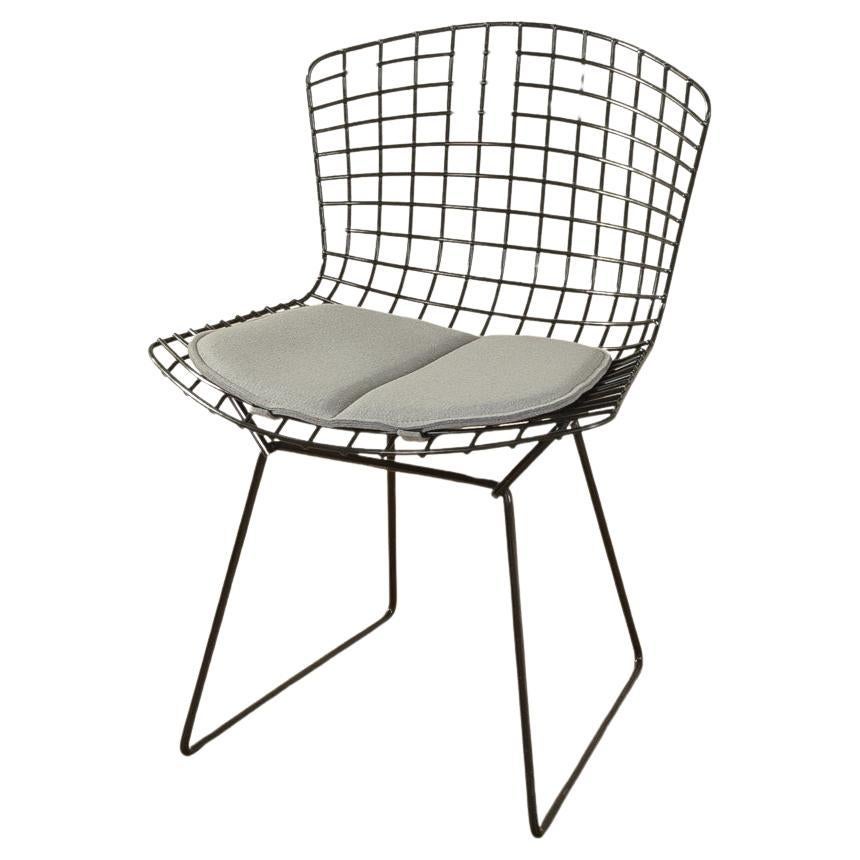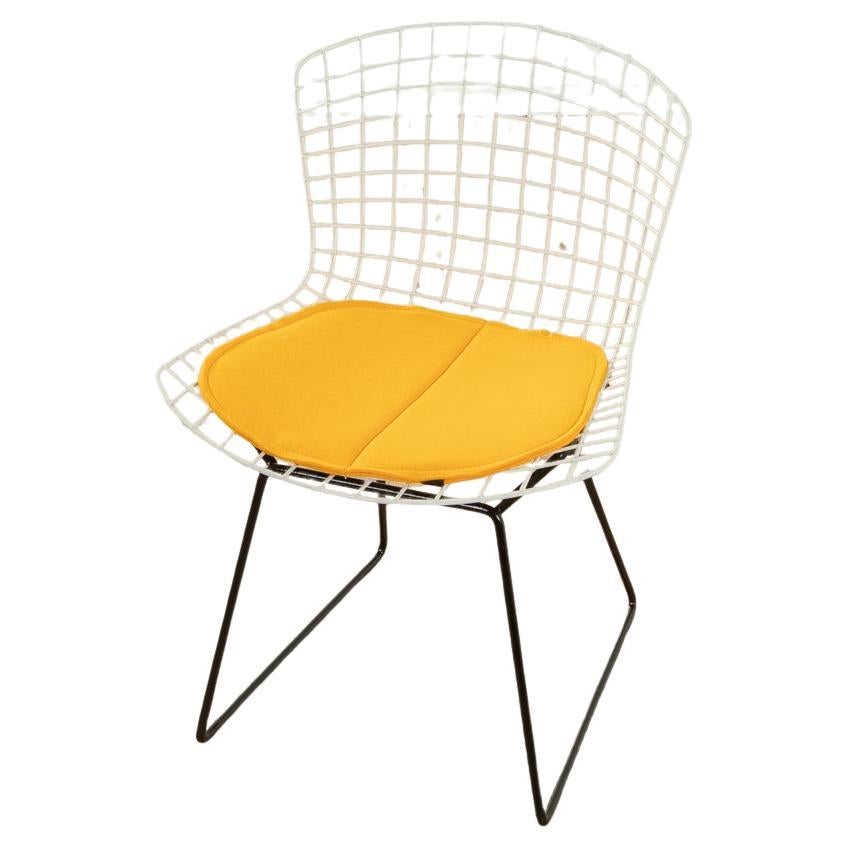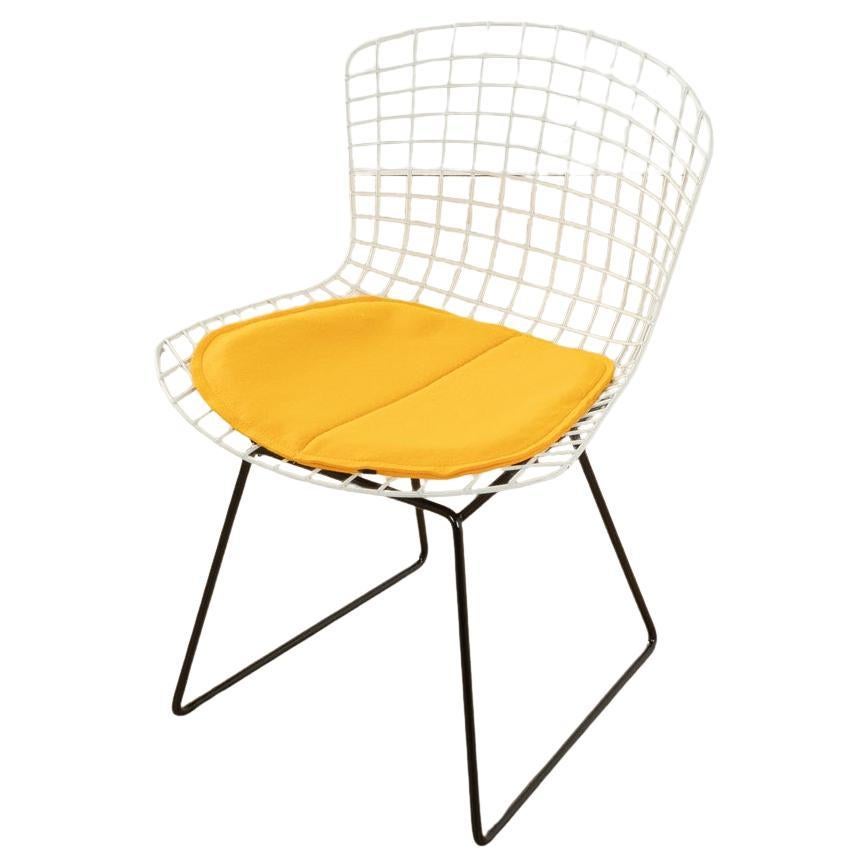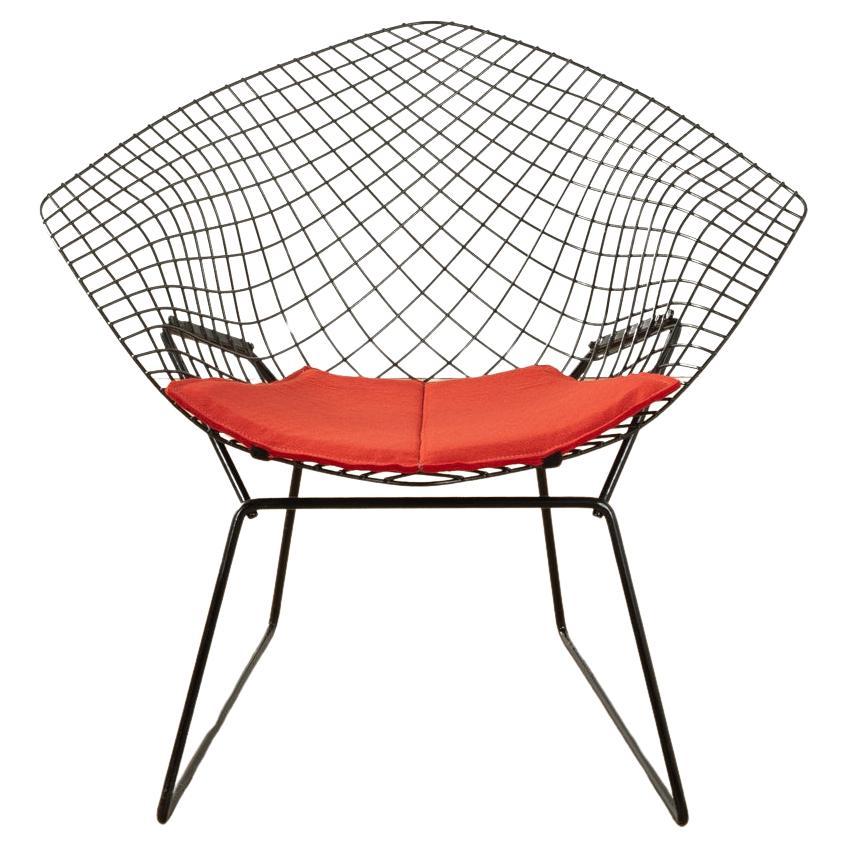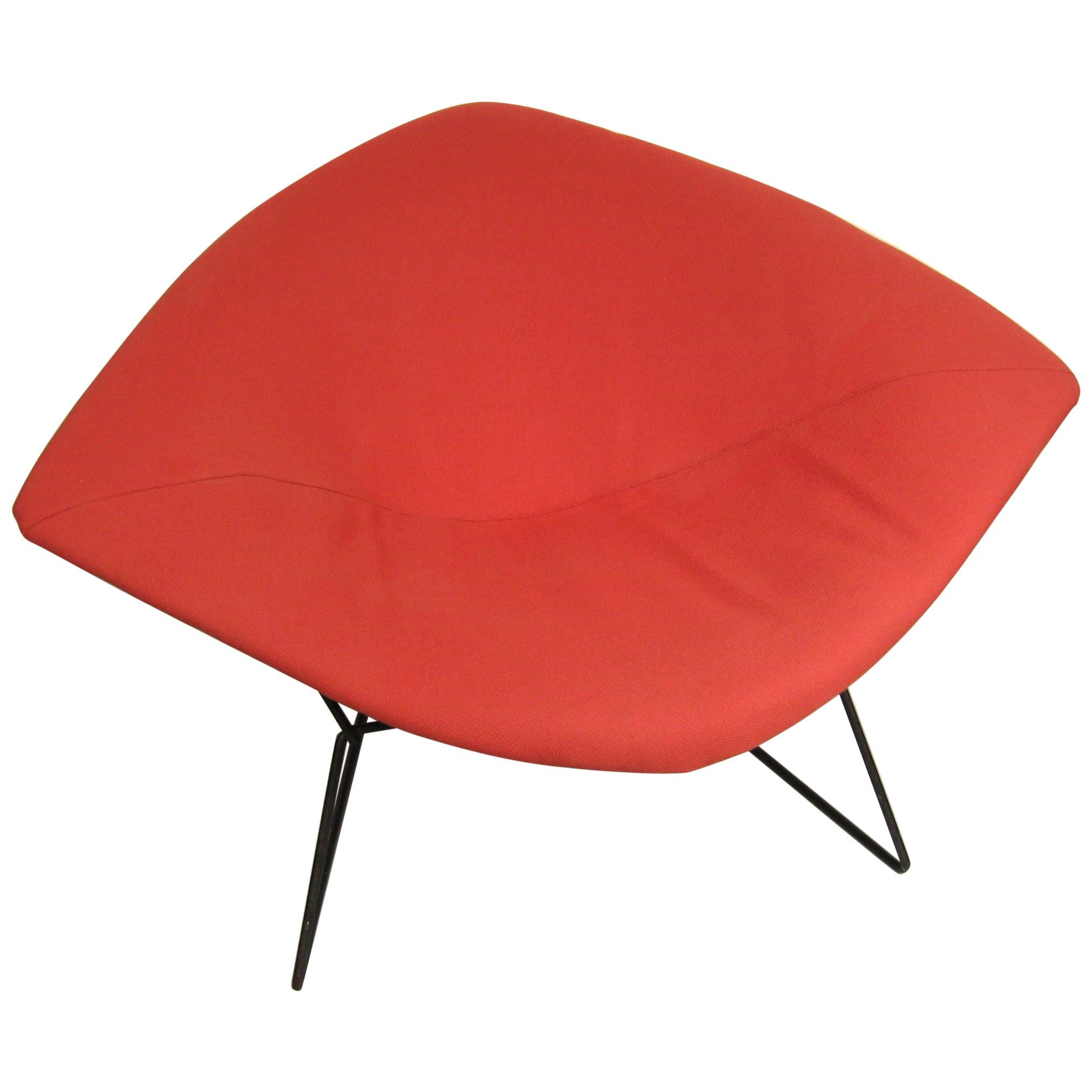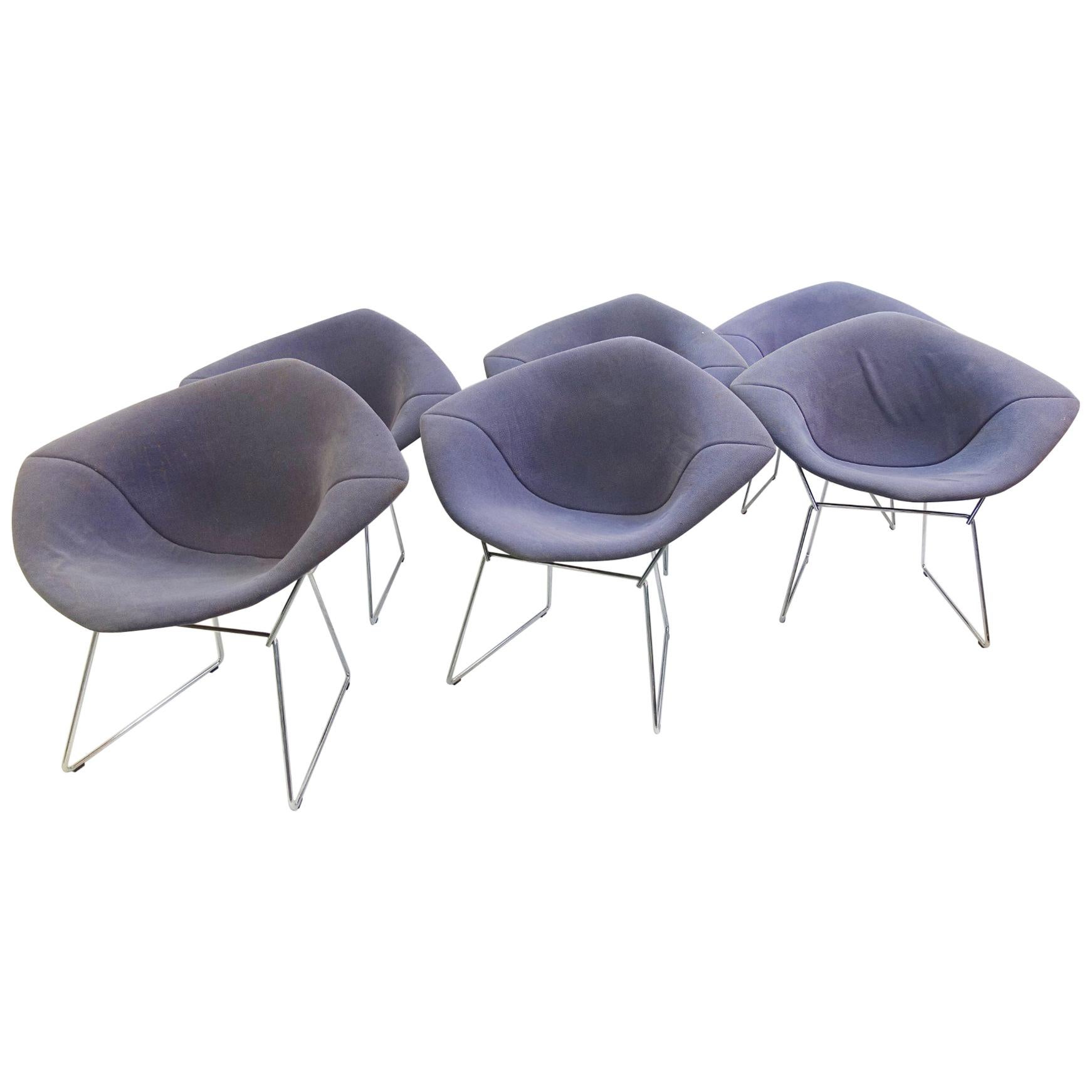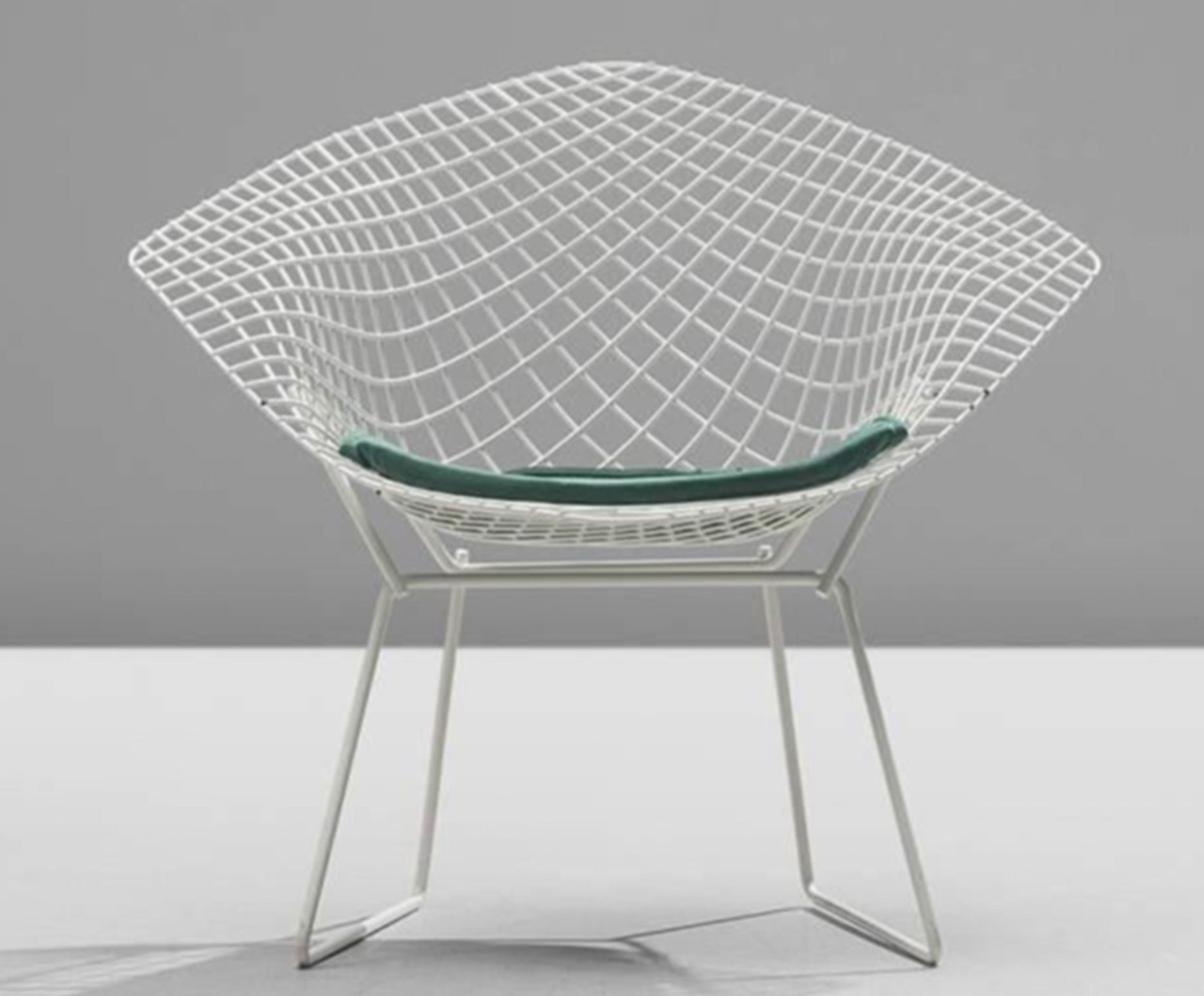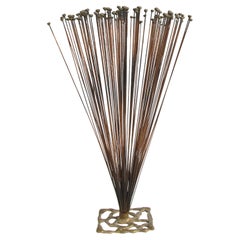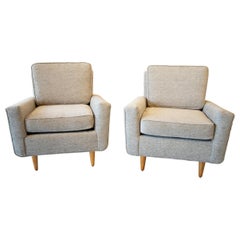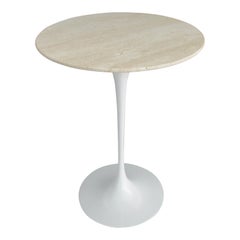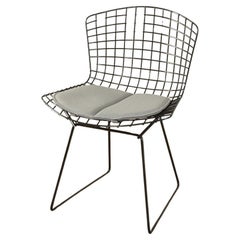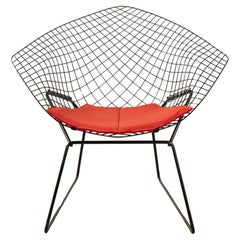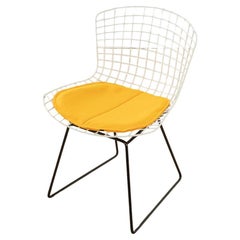Custom Powder Coated Green Harry Bertoia Diamond Chairs for Knoll
About the Item
- Creator:Harry Bertoia (Designer)
- Design:
- Dimensions:Height: 29.5 in (74.93 cm)Width: 33.25 in (84.46 cm)Depth: 22 in (55.88 cm)
- Sold As:Set of 2
- Style:Mid-Century Modern (Of the Period)
- Materials and Techniques:
- Place of Origin:
- Period:
- Date of Manufacture:1960
- Condition:Refinished. Wear consistent with age and use. Excellent pair of recently refinished chairs. There is one spot of discoloration on each chair .
- Seller Location:Ferndale, MI
- Reference Number:1stDibs: LU848213534952
Diamond Chair
To fully understand the design of Harry Bertoia’s (1915–78) 1952 Diamond chair — an austere and photogenic work of woven steel wire, the intricately sculptural wings of which create the illusion of sitting on air — it helps to go back to his college days: In 1937, the Italian-born artist and designer, who emigrated to Detroit at age 15, earned a scholarship to Cranbrook Academy of Art, the illustrious Michigan design school that attracted such luminaries as Florence Knoll, Eero Saarinen and Charles and Ray Eames. Bertoia was deeply influenced by the Eameses, especially by the sculptural quality that was so prominent in the furniture they made. In the 1940s, he left Cranbrook to work for the couple, developing the molded plywood furniture that would become a trademark of their designs.
Bertoia learned to weld while employed by the Eameses, but left their workshop in anger over the lack of credit he received for the important contributions he made there — a dispute that would come to play an important role in the Diamond chair’s development. He eventually took a job at an electronics lab, where he analyzed human mobility for the purpose of designing electronics with easy-to-reach knobs and consoles.
When his former Cranbrook classmate Florence Knoll tapped Bertoia to make furniture for the Pennsylvania company she had recently founded with her husband, Hans, the designer was swayed with the promise of full credit for designs he produced. Armed with a newly minted background in ergonomics as well as the knowledge he gathered from experimentation with the Eameses, Bertoia capably applied what he’d learned over the years at Knoll, where he utilized thin wires of welded metal to produce pieces that appeared to be floating in the wind — yet remained surprisingly comfortable and supportive. The Diamond chair, a widely revered component of the innovative metal furniture line that Bertoia designed at the company, has been in continuous production at Knoll since 1952 and is available in four finishes today.
Harry Bertoia
Sculptor, furniture and jewelry designer, graphic artist and metalsmith, Harry Bertoia was one of the great cross-disciplinarians of 20th-century art and design and a central figure in American mid-century modernism. Among furniture aficionados, Bertoia is known for his chairs such as the wire-lattice Diamond chair (and its variants such as the tall-backed Bird chair) designed for Knoll Inc. and first released in 1952.
As an artist, he is revered for a style that was his alone. Bertoia’s metal sculptures are by turns expressive and austere, powerful and subtle, intimate in scale and monumental. All embody a tension between the intricacy and precision of Bertoia’s forms and the raw strength of his materials: steel, brass, bronze and copper.
Fortune seemed to guide Bertoia’s artistic development. Born in northeastern Italy, Bertoia immigrated to the United States at age 15, joining an older brother in Detroit. He studied drawing and metalworking in the gifted student program at Cass Technical High School. Recognition led to awards that culminated, in 1937, in a teaching scholarship to attend the Cranbrook Academy of Art in suburban Bloomfield Hills, one of the great crucibles of modernism in America.
At Cranbrook, Bertoia made friendships — with architect Eero Saarinen, designers Charles and Ray Eames and Florence Schust Knoll and others — that shaped the course of his life. He taught metalworking at the school, and when materials rationing during World War II limited the availability of metals, Bertoia focused on jewelry design. He also experimented with monotype printmaking, and 19 of his earliest efforts were bought by the Guggenheim Museum.
In 1943, he left Cranbrook to work in California with the Eameses, helping them develop their now-famed plywood furniture. (Bertoia received scant credit.) Late in that decade, Florence and Hans Knoll persuaded him to move east and join Knoll Inc. His chairs became and remain perennial bestsellers. Royalties allowed Bertoia to devote himself full-time to metal sculpture, a medium he began to explore in earnest in 1947.
By the early 1950s Bertoia was receiving commissions for large-scale works from architects — the first came via Saarinen — as he refined his aesthetic vocabulary into two distinct skeins. One comprises his “sounding sculptures” — gongs and “Sonambient” groupings of rods that strike together and chime when touched by hand or by the wind. The other genre encompasses Bertoia’s naturalistic works: abstract sculptures that suggest bushes, flower petals, leaves, dandelions or sprays of grass.
As you will see on these pages, Harry Bertoia was truly unique; his art and designs manifest a wholly singular combination of delicacy and strength.
Find vintage Harry Bertoia sculptures, armchairs, benches and other furniture and art on 1stDibs.
- ShippingRetrieving quote...Shipping from: Ferndale, MI
- Return Policy
More From This Seller
View AllMid-20th Century American Mid-Century Modern Abstract Sculptures
Brass, Steel
Mid-20th Century American Mid-Century Modern Lounge Chairs
Maple
Mid-20th Century American Mid-Century Modern Dining Room Chairs
Steel
Mid-20th Century American Mid-Century Modern Side Tables
Travertine, Iron
Mid-20th Century American Mid-Century Modern Credenzas
Wood
Mid-20th Century American Mid-Century Modern Lounge Chairs
Fabric, Maple
You May Also Like
Vintage 1940s Virgin Islands Mid-Century Modern Chairs
Metal
Vintage 1940s American Mid-Century Modern Chairs
Metal
Vintage 1940s American Mid-Century Modern Chairs
Metal
Vintage 1940s American Mid-Century Modern Chairs
Metal
Vintage 1960s American Mid-Century Modern Chairs
Steel
Vintage 1970s European Armchairs
Chrome
